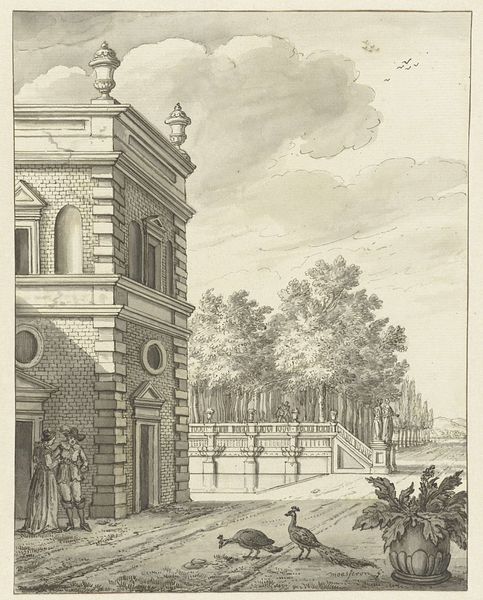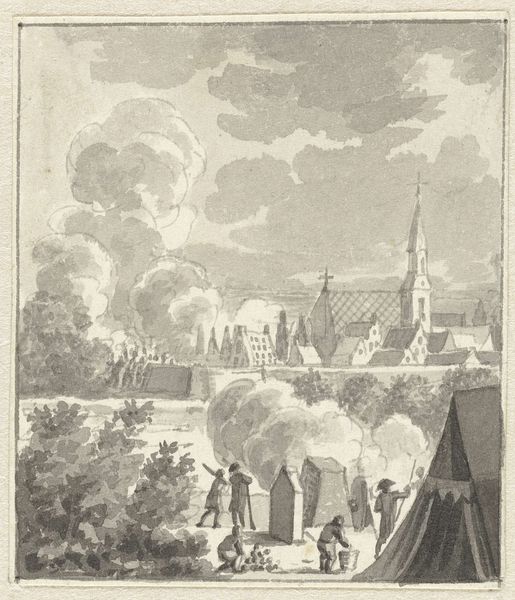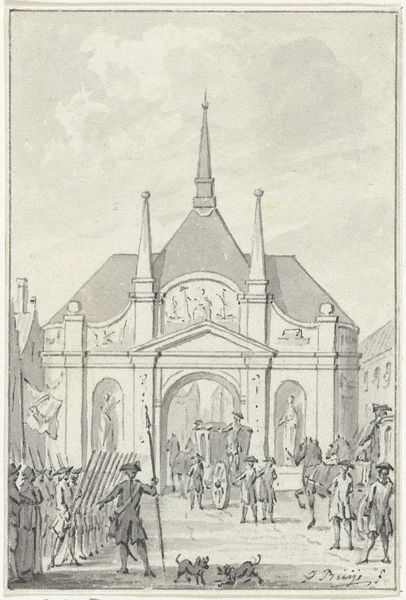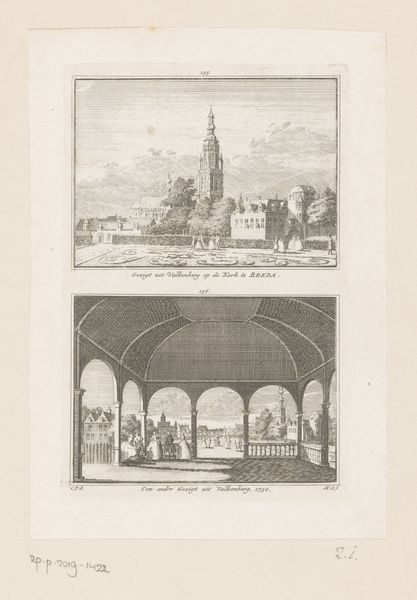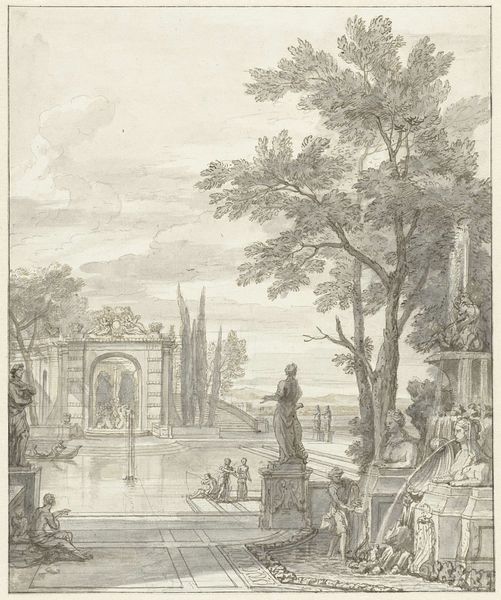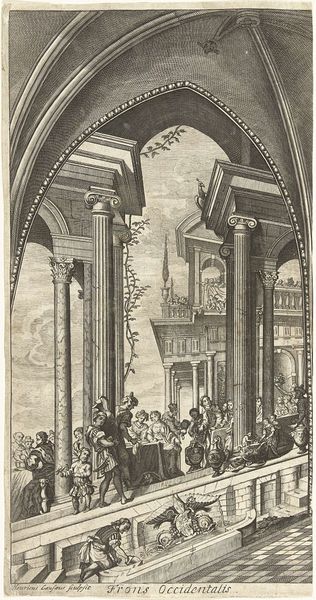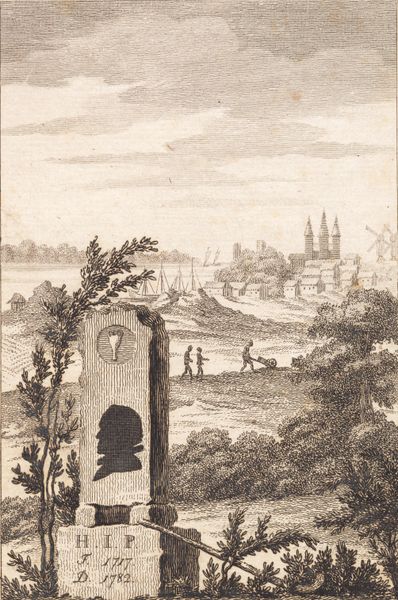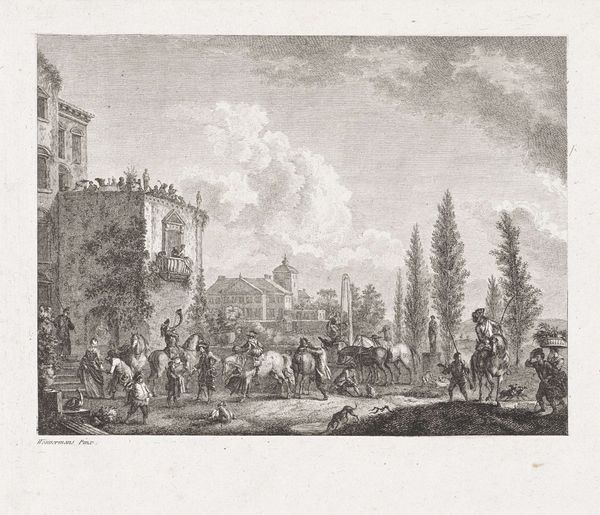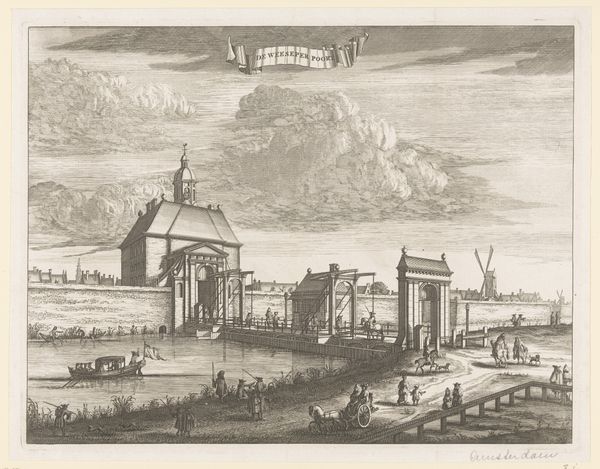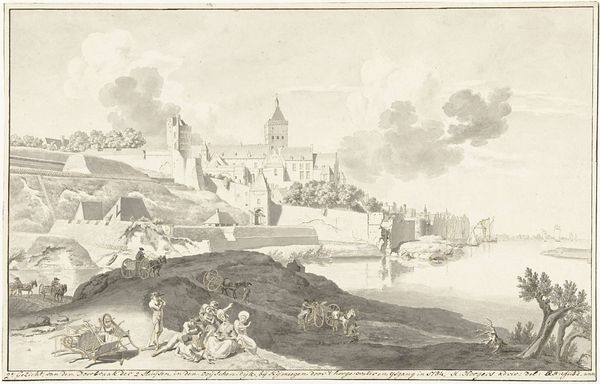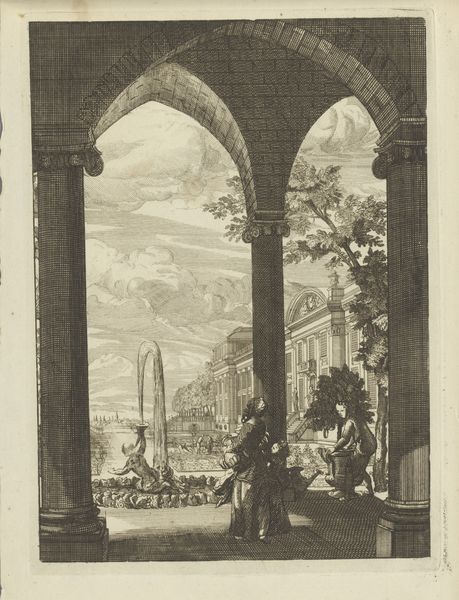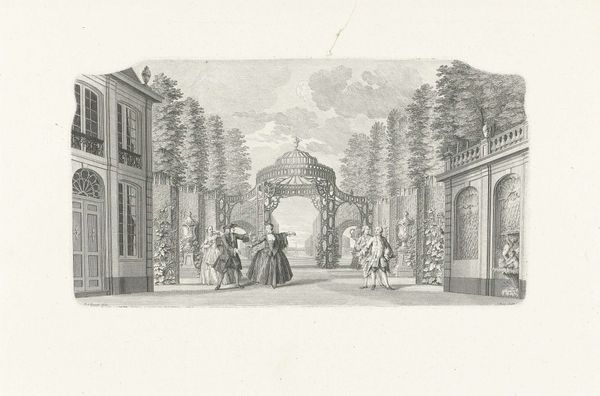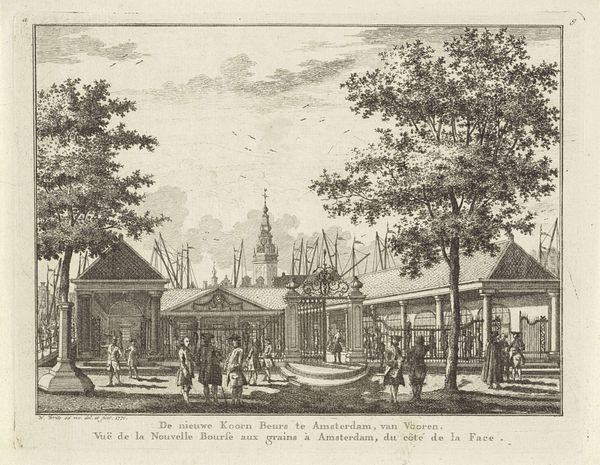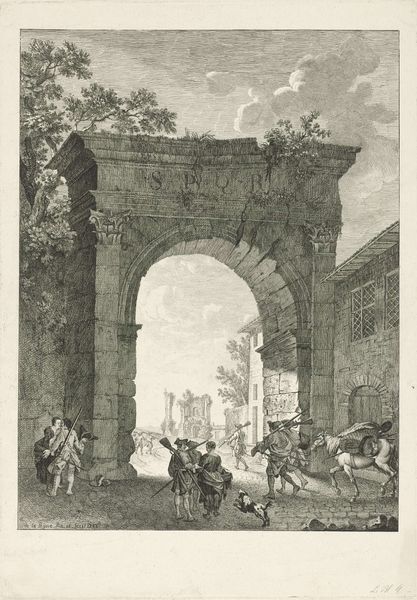
drawing, paper, ink, pencil
#
drawing
#
paper
#
ink
#
pencil
#
cityscape
#
genre-painting
#
history-painting
#
realism
Dimensions: height 65 mm, width 55 mm
Copyright: Rijks Museum: Open Domain
Curator: This ink, pencil, and paper drawing from around 1789 to 1810 is titled "In 't Jaar 1787" and held in the Rijksmuseum. Editor: Well, it's quite striking. The sketchiness adds a sense of urgency, doesn’t it? There’s so much smoke and apparent chaos; it really captures a moment of upheaval. Curator: Absolutely. Looking at the visible marks, you can see the layers of intent; the labor involved in documenting a scene of, I suspect, conflict. See how the artist uses the ink washes to denote the plumes of smoke and to emphasize the movement of bodies across that central bridge? Editor: Yes, and considering the title, “In ‘t Jaar 1787,” I believe this depicts events during the Patriot revolution. You can see how the artist uses the cityscape to communicate a political message about the turbulent period of Dutch history following clashes between the Patriots and Orangists. The location, rendered in stark greys and whites, highlights its own sociopolitical significance. Curator: And that use of grey paper adds a particular element. Was this the most readily available material, or was it a deliberate choice? The constraints inform our understanding. It affects the mood so directly. And how does it relate to other depictions of similar events; what was the dominant aesthetic in this politically charged time? Editor: The relative disposability of a drawing like this – compared to an oil painting, for example – meant it could be disseminated widely as propaganda to galvanize popular support or criticism. Its portability would have facilitated the spread of potentially seditious ideas at a crucial moment. I wonder how works such as these were received across different social strata at the time? Curator: It also forces you to look carefully at the materials: the specific kind of paper and ink, to potentially locate their origin, to connect it to place, to workshop and understand it less as fine art, but more like an object of labor, of mass communication... Editor: I’d say analyzing its impact on contemporary audiences would offer more fruitful avenues of understanding. Curator: True. The confluence of artistic process and socio-political climate is certainly worthy of consideration here. Editor: Absolutely. These glimpses into pivotal moments really demonstrate art’s capability as a historical tool, shaping public memory.
Comments
No comments
Be the first to comment and join the conversation on the ultimate creative platform.
